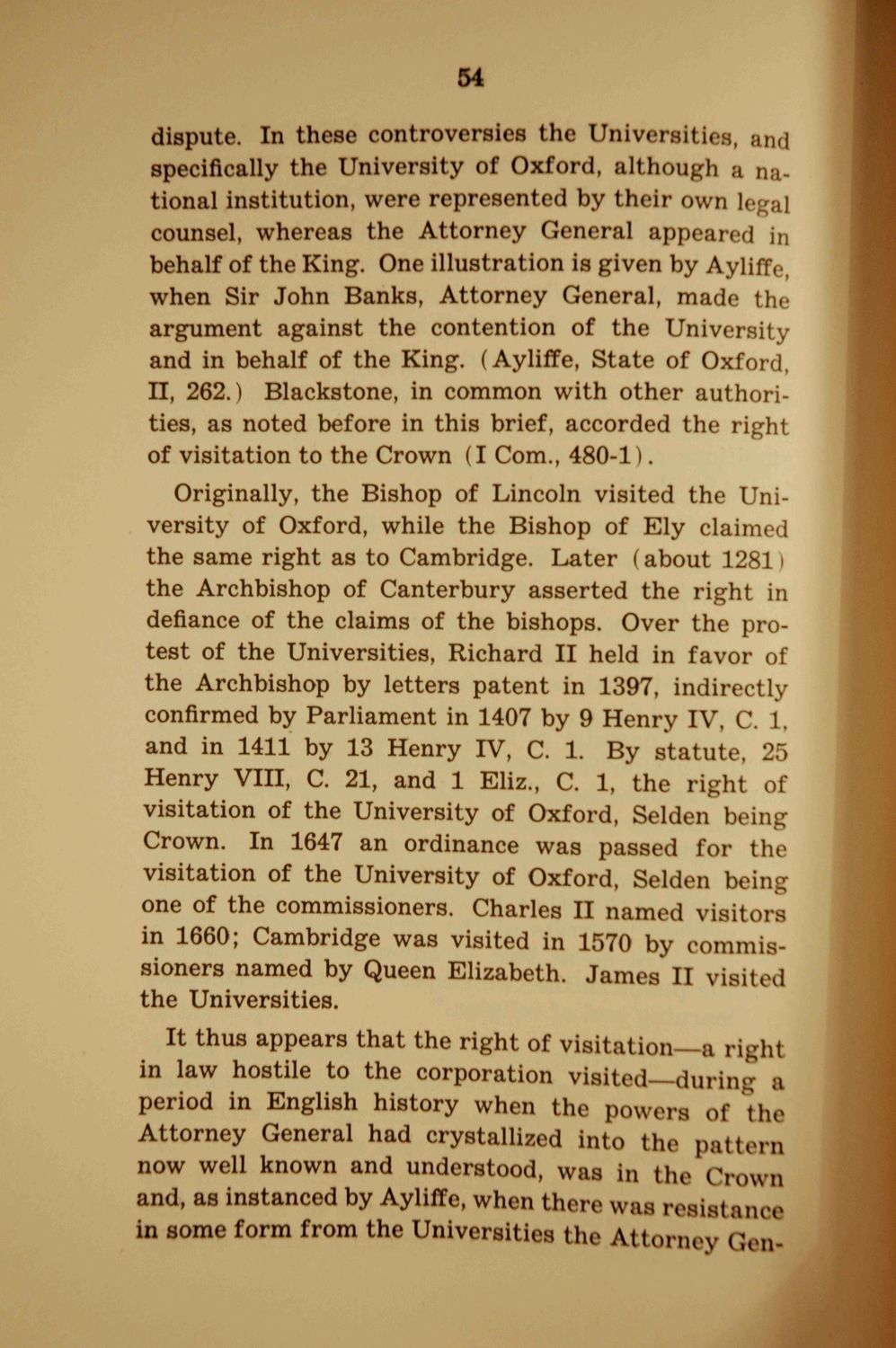| |
| |
Caption: Booklet - UI Charter of Freedom (1942)
This is a reduced-resolution page image for fast online browsing.

EXTRACTED TEXT FROM PAGE:
54 disput - In these controversies the Universities and specifically the University of Oxford, although a national institution, were represented by their own legal counsel, whereas the Attorney General apj» ired In behalf of the King. One illustration is given by AyliflY when Sir John Banks, Attorney General, made 1 he argument against the contention of the University and in behalf of the King. (Ayliffe, State of Oxford II, 262.) Blackstone, in common with other authorities, as noted before in this brief, accorded the right of visitation to the Crown (I Com., 480-11. Originally, the Bishop of Lincoln visited the University of Oxford, while the Bishop of Ely claimed the same right as to Cambridge. Later (about 1281 the Archbishop of Canterbury asserted the right in defiance of the claims of the bishops. Over the protest of the Universities, Richard II held in favor of the Archbishop by letters patent in 1397, indirectly confirmed by Parliament in 1407 by 9 Henry IV. C. 1. and in 1411 by 13 Henry IV, C. 1. By statute. 25 Henry VIII, C. 21, and 1 Eliz., C. 1. the right of visitation of the University of Oxford, Selden being Crown. In 1647 an ordinance was passed for the visitation of the University of Oxford, S Iden being one of the commissioners. Charles II named visitors in 1660; Cambridge was visited in 1570 by commissioners named by Queen Elizabeth. James IT visit, d the Universities. It thus appears that the right of visitation—a ri ht in law hostile to the corporation visited dining a period in English history when the pown of the Attorney General had crystallized into the pattern now well known and understood, was in the Crown and, as instanced by Ayliffe, when then- was reaiatani e in some form from the U n i v e r s i t y tho, A*<
| |